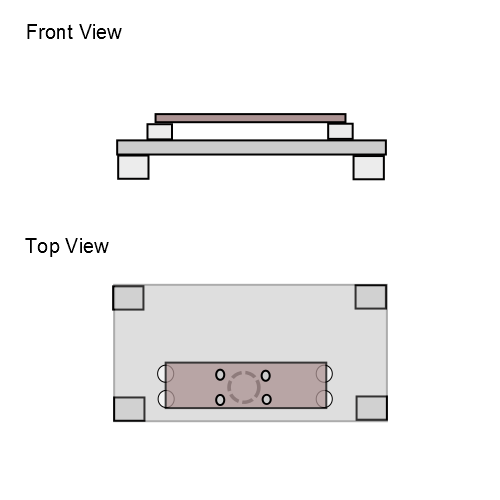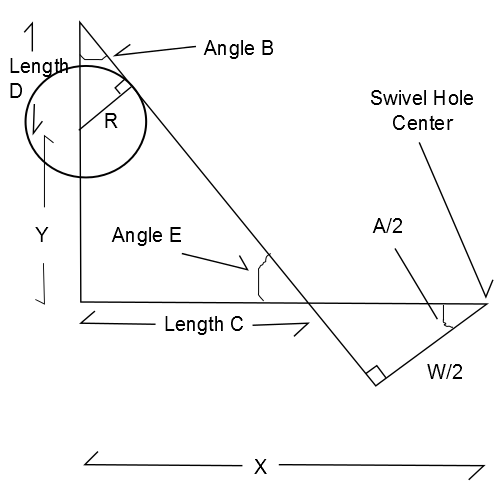Cold Saw/V1 Design Rationale/Hold System/Base: Difference between revisions
| Line 36: | Line 36: | ||
Let the swivel angle be '''A'''. | Let the swivel angle be '''A'''. | ||
Let '''Angle B''' and '''Length C''' be placeholder variables that we use only for the calculation but do not include in the final equation. | |||
[[Image: ColdSawSwivelAngle.png]] | [[Image: ColdSawSwivelAngle.png]] | ||
Revision as of 20:32, 12 June 2012
Functions
- The main function of the base is to be the part of the Cold Saw that mounts onto an external surface. The base should be elevated enough from the mounting surface such that the swivel mechanism can be adjusted from below.
The elevation can be achieved by 4 blocks, 1 welded under each corner of the base.
Fastening can be achieved by the use of C-clamps or fasteners after drilling holes to match the pattern on the mounting surface.
- The base also functions as a smooth surface on which swiveling parts can slide on, and provides a hole through which the swivel rod can be inserted. This hole on the base acts as the center of rotation for the swivel mechanism.
- The base is rigidly mounted to the vise such that the the rigidity of the mounting surface is transferred via the base to the vise. Rigid vise mounting is a requirement of precision operation. The fastening method is the vise 4-screwed into a flat bar that is 4-screwed into a plate. The vise must be detachable from the base such that parts of the swivel mechanism can also be isolated for modularity and ease of maintenance. The flat bar is elevated from the base by spacers; the spacers should be bored rods for ease of fabrication while retaining rigidity.
Concept
Calculations
- Dimensions of the Mounting Rectangle between the Base Plate and the Base Flat Bar:
We want the dimensions to enable the Cold Saw to swivel at least 90 degrees.
Assume that what rotates on the swivel hole will be a swivel plate, and that the swivel plate will be long towards the back of the Cold Saw.
Assume that the swivel plate's hole is centered along its width.
We are concerned about the width of that swivel plate because it is the swivel plate's width that determines the angle at which the swivel plate contacts the spacers (the ones that isolate the base plate from the base flat bar).
Assume that the spacer is round.
Let the length and width of the mounting rectangle be X-Mounting and Y-Mounting, respectively.
Let the width of the swivel plate be W.
Let the radius of the spacer be R.
Let the swivel angle be A.
Let Angle B and Length C be placeholder variables that we use only for the calculation but do not include in the final equation.

